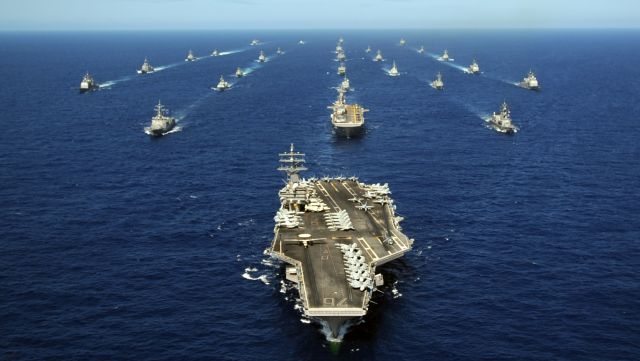The realization is setting in that the military superiority the U.S. enjoyed over the two decades following the collapse of the Soviet Union and the end of the Cold War is eroding. In part this is a consequence of the realization by potential adversaries that they were unlikely to prevail in a conventional conflict with the United States. Hence, these nations chose to pursue asymmetric strategies.
Adversaries of all types have “gone to school” on the so-called American Way of War in order to identify weaknesses that could be exploited. In some instances this meant selective investment in advanced capabilities. In other cases, prospective adversaries sought to create leverage by deploying large numbers of relatively simple and low-cost platforms and systems in order to overwhelm their more technologically-sophisticated opponents or just create an unfavorable cost-exchange ratio.
China is deploying a wide variety of long-range weapons including one ship-killing, precision-guided ballistic missile. Iran has a mixed array of conventional aircraft, ships, and tanks along with sea-skimming cruise missiles, long-range ballistic missiles, advanced sea mines and swarms of small boats. Many countries are deploying hundreds of surface-to-air missiles and other capabilities intended to deny the U.S. its long-held advantage in airpower.
Hezbollah, Iran’s surrogate, now deploys a massive arsenal of rockets and missiles, anti-armor guided missiles and mines, and squad-level automatic weapons to complement traditional systems such as snipers and suicide bombers. The same proliferation will likely occur in man-portable anti-aircraft weapons, thereby challenging U.S. dominance in close air support.
Recent analyses have pointed out that the United States is losing its monopoly in advanced military capabilities to state and non-state actors alike. This has already taken place in communications and even intelligence thanks to sources such as Google Earth. It is rapidly becoming the case with a wide range of advanced weapons and the training that goes with them. Both China and Russia have programs underway to develop their own fifth-generation fighters, advanced offensive and defensive missile systems and even weapons in space. Allies, friends and adversaries alike are investing heavily in unmanned aerial systems, electronic warfare and cyber weapons.
While prospective adversaries have been searching for advantages and acquiring a wide range of new systems and weapons, the United States lost a decade or more of time during which it should have been modernizing its conventional forces and, arguably, investing in transformational capabilities. Many critical modernization programs such as the F-22 and F-35 fighters, new long-range strike system, air- and sea-based missile defenses and DDG-1000 guided missile destroyers were either truncated, delayed or reduced in scope or capability.
It is not enough simply to modernize existing capabilities with the next-generation platform, system or weapons. Defense decisionmakers need to focus on what can be done to change strategic and operational trajectories that appear increasingly unfavorable to the United States. Consideration needs to be given to “game changing” investments that undermine those areas where prospective adversaries enjoy comparative advantages, thereby forcing a change in their strategies, negating their investments in costly capabilities and even bending to our advantage the cost exchange ratio between our systems and theirs. In particular, the U.S. needs to invest in capabilities that undermine prospective adversaries’ quantitative superiority in ballistic and cruise missiles and long-range rockets at relatively low cost.
Lasers have been said to offer the potential to transform warfare for decades with the combination of deep magazines, long range, precision engagement at the speed of light and relatively low cost per shot. Past efforts to develop a militarily-effective and affordable laser weapon system had limited success. Over the past several years, however, R&D on solid state lasers has proceeded to a point that suggests a maritime laser capability could have a significant impact on future naval operations. The potential for laser weapons needs to be considered in the context of advances in power generation capabilities of newer Navy ships, notably the Ford-class aircraft carriers and Flight III Arleigh Burke destroyers.
Now the combination of a changing threat, advances in laser technologies and the opportunities provided by new power sources suggests that it is time for a reconsideration of the role of this potential game-changing capability and, in particular, for the Navy to consider a serious commitment to a maritime laser program.










